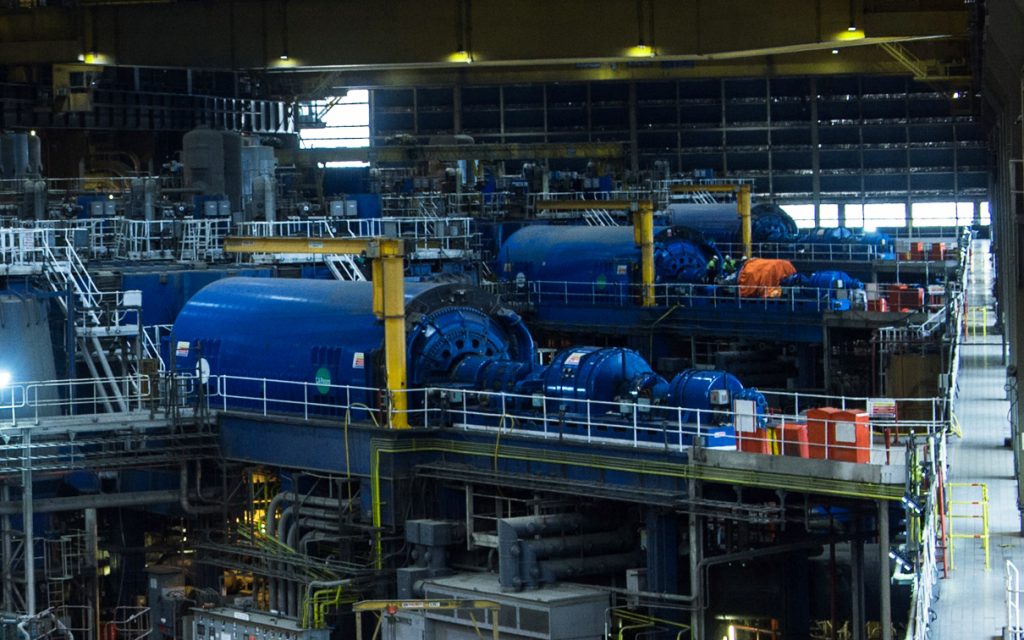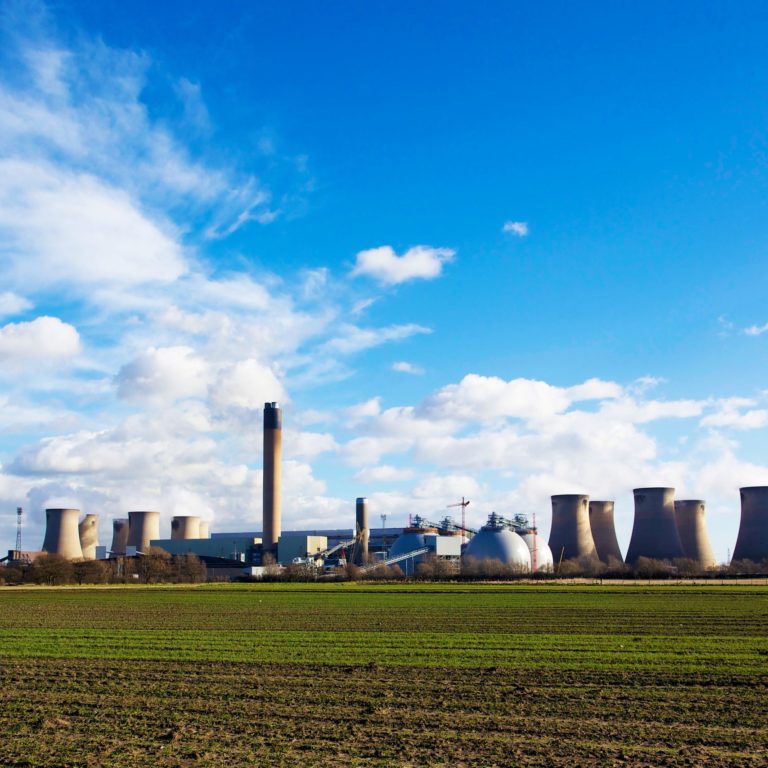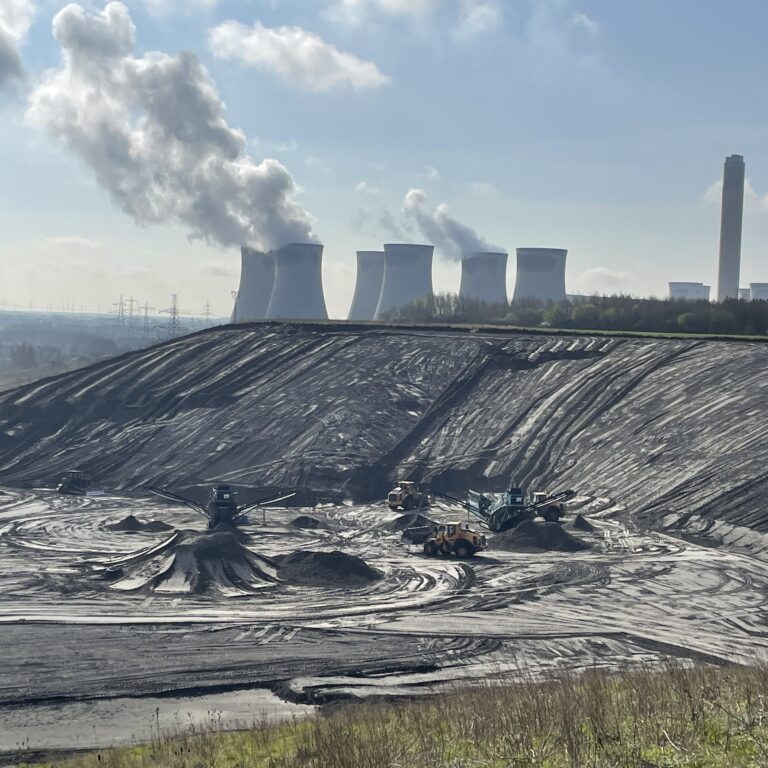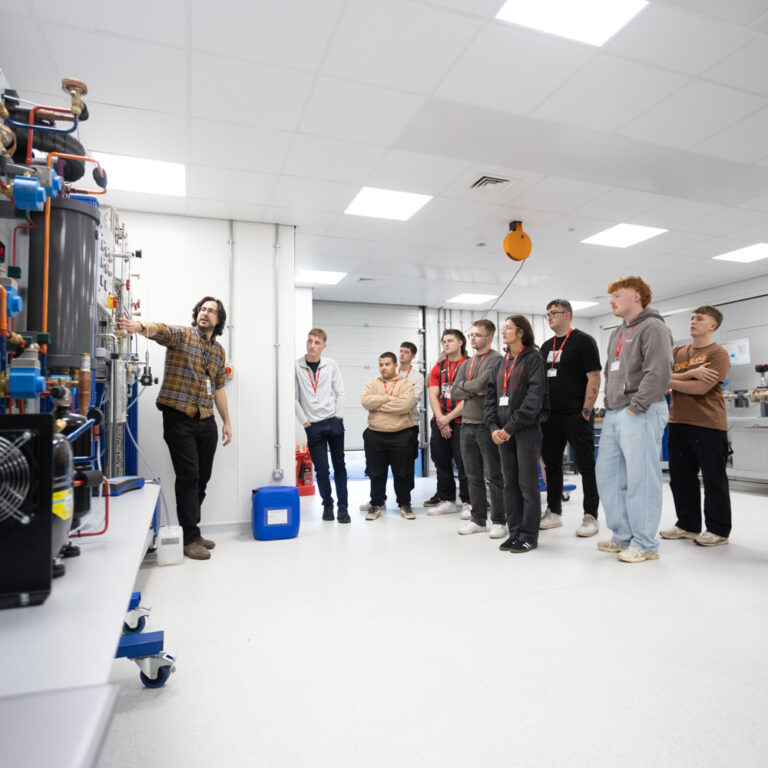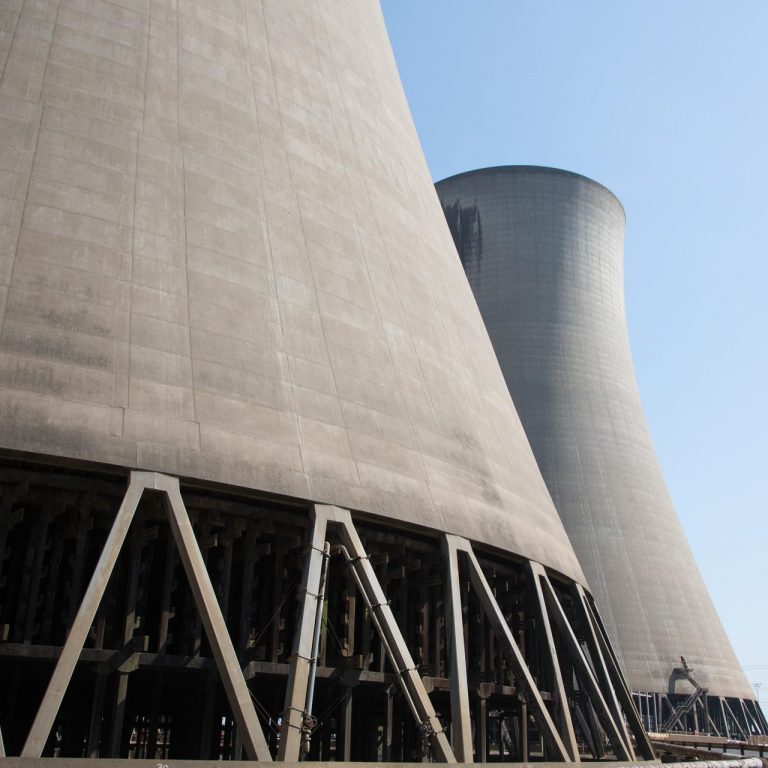In 2003, the UK’s biggest coal power station took its first steps away from the fossil fuel which defined electricity generation for more than a century. It was in that year that Drax Power Station began co-firing biomass as a renewable alternative to coal.
It symbolised the beginnings of the power station’s ambitious transformation from fossil-fuel stalwart to the country’s largest single-site renewable electricity generator. This plan presented a massive engineering challenge for Drax, with significant amounts of new knowledge quickly needed.
Fifteen years later, three of its generating units now run entirely on compressed wood pellets, a form of biomass, while coal has been relegated to stepping in only to cover spikes in demand and improve system stability.
Now Drax has converted a fourth unit from coal to biomass. This development represents the passing of a two thirds marker for the power station’s coal-free ambitions and adds 600-plus megawatts (MW) of renewable electricity to Great Britain’s national transmission system.
Building on the past
Drax first converted a coal unit to biomass in 2013, with two more following in 2014 and 2016. This put Drax in an interesting position going into a new conversion: on one hand, it is one of the most experienced generators in the world when it comes to dealing with and upgrading to biomass. On the other, it’s still relatively new to the low carbon fuel compared with its dealings with coal.
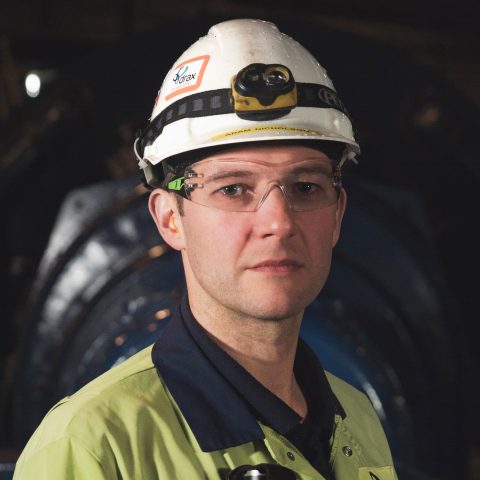
Adam Nicholson
“We’ve decades of understanding of how to use coal, but we’ve only been operating with biomass since we started the full conversion trials in 2011,” says Adam Nicholson, Section Head for Process Performance at Drax Power. “We’ve got few running hours under our belts with the new fuel versus the hundreds of man years of coal knowledge and operation all around the country.”
When converting a generating unit, the steam turbine and generator itself remain the same. The difference is all in the material being delivered, stored, crushed and blown into the boiler and burned to heat up water and create steam. And because biomass can be a volatile substance – much more so than coal – this process must be a careful one.
Drax could build on the learnings and equipment it had already developed for biomass such as specially built trains and pulverising mills, but storage proved a bigger issue. The giant biomass domes at Drax that make up the EcoStore are advanced technological structures carefully attuned to storing biomass, but for Unit 4, they were off limits.
Instead Drax engineers had to come up with another solution.
The journey of a pellet through the power station
Normally wood pellets are brought into Drax by train, unloaded and stored in the biomass domes before travelling through the power station to the mills and then boilers. Unit 4, however, sits in the second half of the station – built 12 years after the first. This slight change in location presented a problem.
“There’s no link from the eco store to Unit 4 at all,” explains Nicholson. “You can’t use the storage domes and that whole infrastructure to get anything to Unit 4.”
Drax engineers set about designing a new conveyor system that could connect the domes to the mills and boiler that powers Unit 4. After weeks of design, the team had a theoretical plan to connect the two locations with one problem: it was entirely uneconomical.
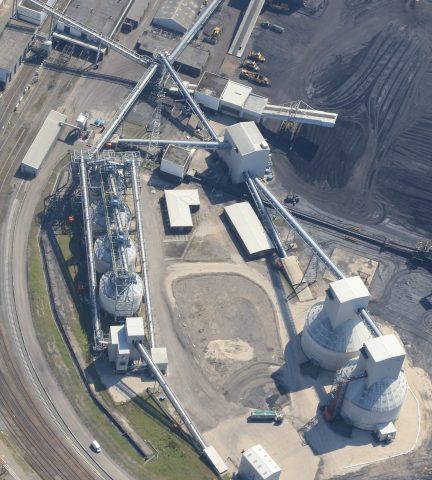
Rail unloading building 1 and storage silos
“If we were building a new plant it would be relatively easy, because you could plan properly and wouldn’t have existing equipment in the way,” says Nicholson.
“We had to plan around it and make use of the pre-existing plant.”
Within that pre-existing plant though were vital pieces of equipment, some of which had laid dormant since Drax stopped fuelling its boilers with a mixture of coal and biomass and opted instead for full unit conversions.
Drax began cofiring across all six units in 2003, using two different materials – a mix of around 5% biomass and 95% coal. A direct injection facility was added in 2005. It involved blowing crushed wood pellets into coal fuel lines from two of the power station’s 60 mills.
Then, the amount of renewable power Drax was able to generate roughly doubled in the summer of 2010 when a 400 MW co-firing facility became operational.
Back to the present day, it’s fortunate for the Unit 4 conversion that the co-firing facility includes its own rail unloading building (RUB 1) and storage silos. They are located much closer to the unit than the bigger RUB 2 and the massive biomass domes.
This solved the problem of storage but moving the required volumes of biomass through the plant without significant transport construction still posed a challenge.
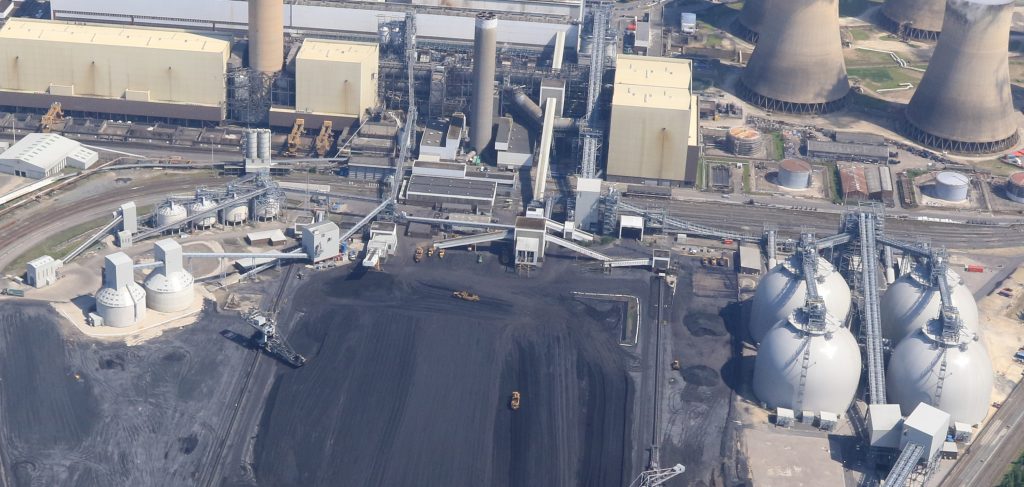
Rail unloading building 1 and storage silos for Unit 4 [left], EcoStore biomass domes for units 1-3 [right]
The post-coal future

Andy Koss
For now, Drax’s fifth and sixth generating unit remain coal-powered, but are called upon less frequently. With Great Britain set to go completely coal-free by 2025, there are plans to convert these too, but as part of a system of combined cycle gas turbines and giant batteries rather than biomass powered units.
It’s an opportunity for Drax to again leverage its pre-existing plant and provide the grid with a fast acting-source of lower-carbon electricity. As with converting to biomass, it will pose a complex new engineering challenge – one that will prepare Drax to meet the future needs of grid as it continues to change and demand greater flexibility from generators.
“The speed at which the Unit 4 project has been delivered is testament to the engineering expertise, skill and ingenuity we continue to see at Drax. We’re nimble and innovative enough to meet future challenges,” says Andy Koss, Chief Executive, Drax Power.
“We may look very different in 10 or 20 years’ time, but the ethos of that innovation and agility is something that will persist.”
Repowering the remaining coal plant with gas and up to 200 MW of batteries will sit alongside research into areas such as carbon capture, use and storage (CCuS) that is all geared towards expanding Drax Power beyond a single site generator into a portfolio of flexible power production facilities.
Unit 4’s conversion is more than just a step beyond halfway for the power station’s decarbonisation, but a significant step towards becoming entirely coal-free.








